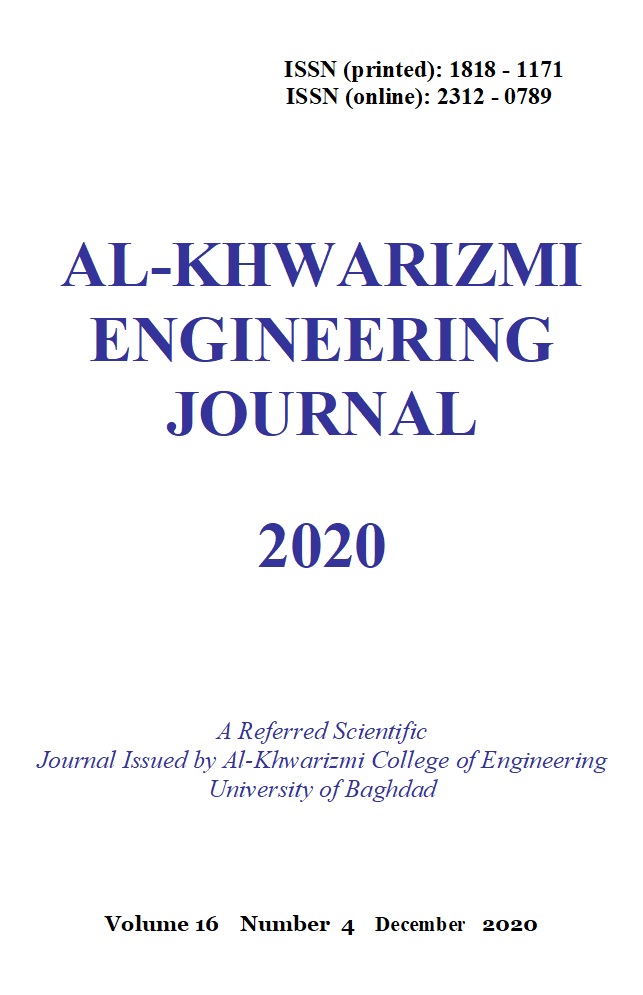Cloud Manufacturing framework for controlling and monitoring of machines
DOI:
https://doi.org/10.22153/kej.2020.09.002Abstract
Due to the development that occurs in the technologies of information system many techniques was introduced and played important role in the connection between machines and peoples through internet, also it used to control and monitor of machines, these technologies called cloud computing and Internet of Things. With the replacement of computing resources with manufacturing resources cloud computing named converted into cloud manufacturing.
In this research cloud computing was used in the field of manufacturing to automate the process of selecting G-Code that Computer Numerical Control machine work it, this process was applied by the using of this machine with Radio Frequency Identification and a AWS Cloud services and some of python libraries such as PAHO to make the connection between devices.
Present sensor value (A sensor called DHT sensor used in this research to measure temperature and humidity) on cloud to help operator make decision. This technology was used to eliminate paper work, provide a real time monitoring of machines and give the upper level of management to take their decisions about the products and its status to begin the shipping to the costumer
Downloads
References
Y. Li and Z. Zhou, “Cloud Manufacturing : definitions , features , modes and core issues,” vol. 563, pp. 342–346, 2014, doi: 10.4028/www.scientific.net/AMM.563.342.
L. Wang, “Machine availability monitoring and machining process planning towards Cloud manufacturing,” CIRP J. Manuf. Sci. Technol., vol. 6, no. 4, pp. 263–273, 2013, doi: 10.1016/j.cirpj.2013.07.001.
A. Caggiano, T. Segreto, and R. Teti, “Cloud Manufacturing Framework for Smart Monitoring of Machining,” Procedia CIRP, vol. 55, pp. 248–253, 2016, doi: 10.1016/j.procir.2016.08.049.
J. Maciá Pérez, Francisco & Marcos Jorquera, Diego & Iglesias, Virgilio & Kliemann, Francisco & Gimeno, Mora & Vicente, Jose & Berna-Martinez, “Phoenix Computing: IT Semantic Management Models (TIN2006-04081).” 2019.
J. P. Rudolph and C. Emmelmann, “A Cloud-based Platform for Automated Order Processing in Additive Manufacturing,” Procedia CIRP, vol. 63, pp. 412–417, 2017, doi: 10.1016/j.procir.2017.03.087.
X. V. Wang and L. Wang, “WR cloud: A novel WEEE remanufacturing cloud system,” Procedia CIRP, vol. 29, pp. 786–791, 2015, doi: 10.1016/j.procir.2015.02.011.
R. Y. Zhong, L. Wang, and X. Xu, “An IoT-enabled Real-time Machine Status Monitoring Approach for Cloud Manufacturing,” Procedia CIRP, vol. 63, pp. 709–714, 2017, doi: 10.1016/j.procir.2017.03.349.
O. Vermesan and P. Friess, “Internet of Things – From Research and Innovation to Market Deployment,” in river publishers, 2013,ch.4, p. 143.
A. K. Khudhier, A. Z. M. Shammari, and A. H. Hamad, “Industrial CAD-CAM system based remote manufacturing process using Raspberry Pi web server,” J. Eng. Appl. Sci., vol. 13, no. 11, pp. 4193–4197, 2018, doi: 10.3923/jeasci.2018.4193.4197.
Downloads
Published
Issue
Section
License
Copyright: Open Access authors retain the copyrights of their papers, and all open access articles are distributed under the terms of the Creative Commons Attribution License, which permits unrestricted use, distribution, and reproduction in any medium, provided that the original work is properly cited. The use of general descriptive names, trade names, trademarks, and so forth in this publication, even if not specifically identified, does not imply that these names are not protected by the relevant laws and regulations. While the advice and information in this journal are believed to be true and accurate on the date of its going to press, neither the authors, the editors, nor the publisher can accept any legal responsibility for any errors or omissions that may be made. The publisher makes no warranty, express or implied, with respect to the material contained herein.
















